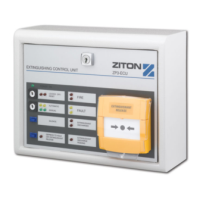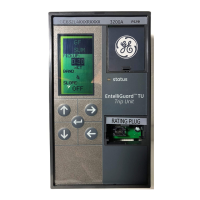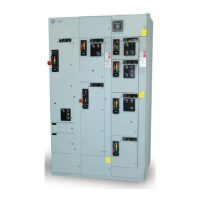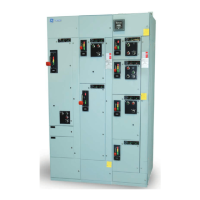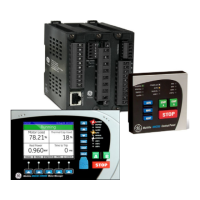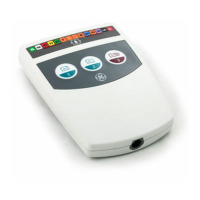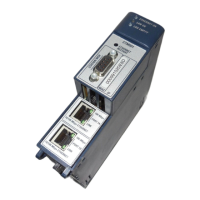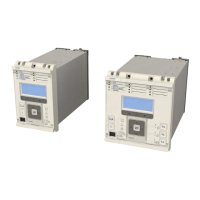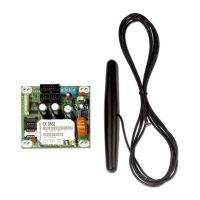Do you have a question about the GE EX2100 and is the answer not in the manual?
| Frequency Range | 50/60 Hz |
|---|---|
| Communication Protocols | Modbus |
| Humidity | 5% to 95% (non-condensing) |
| Communication Ports | RS-485, Ethernet |
| Certifications | UL, CE |
| Storage Temperature | -40°C to 85°C |
Introduces the exciter and defines the document contents for a general product overview.
Describes the flexible modular system for generator excitation, including power sources and architecture.
Details the EX2100 hardware contained in three cabinets: control, auxiliary, and power conversion.
Explains the microprocessor-based controllers and software blocks used for exciter control functionality.
Summarizes the EX2100 characteristics, including power conversion module and power source details.
Provides contact information for GE Industrial Systems Product Service Engineering for assistance.
Lists other documents that apply to the exciter and assist in understanding the system.
Describes the function of the EX2100 static exciter, control, and protection circuits.
Lists the basic and optional components of the EX2100 exciter system.
Details variations of single and redundant control types with single or redundant bridges.
Explains the components within the Power Conversion cabinet, including the PCM and bridge rectifier.
Describes modules in the auxiliary cabinet for generator protection and startup DC power.
Details the control cabinet contents, including keypad, control power distribution, and I/O terminal boards.
Explains the VME-style rack with boards for M1, M2, and C controllers in simplex or redundant systems.
Shows interconnections between simplex control, terminal boards, and power supply.
Describes a redundant system with three controllers and three redundant power supplies.
Explains power distribution via EPDM and EPSM modules for controllers and other boards.
Details the exciter software, control blocks, signal flow, and system variables calculation.
Describes the EX2100 printed wiring boards and their operation in four functional groups.
Details the DSPX, ACLA, EISB, EMIO, and ESEL boards located in the control module.
Describes boards interfacing I/O signals, including EPCT, ECTB, EXTB, EDCF, and EACF.
Measures field current and voltage at the SCR bridge, interfaces to the EISB board via fiber-optic link.
Measures exciter AC supply voltage and current, interfaces to controllers M1, M2, and C.
Details boards for bridge control and protection, including EGPA, EXCS, EDEX, EGDM, EXAM.
Covers EPDM, EPBP Backplane, EPSM Module, and DACA Converter for power distribution.
Describes customer equipment connections, I/O, and system cabling for desired functionality.
Displays a typical connection diagram for common power and analog I/O for an excitation system.
Explains the 3-phase AC input conversion to controlled DC output from various sources.
Details customer-supplied PT and CT wiring to the control cabinet and EPCT board.
Covers customer inputs and relay contact outputs wired to the ECTB board.
Shows customer AC and DC power inputs wired to the exciter's Power Distribution Module (EPDM).
Details connections to fuse boards LFU1 and LFU2 for 600V and 1000V filters.
Covers internal signals, including AC and DC feedback measurements.
Illustrates DC field contactor connections and control board interfacing.
Explains the function of the EDEX module and field discharge resistor for dissipating stored energy.
Describes the EGDM system that detects field leakage resistance to ground.
Details the use of station batteries or auxiliary AC source for initiating field current.
Explains the filter that conducts high frequency components of induced voltages to ground.
Shows typical exciter connection to the redundant Unit Data Highway (UDH) network.
Describes toolbox connection via RS-232C or Ethernet port for configuration and maintenance.
Provides operating guidelines for the keypad for monitoring, control, and parameter adjustment.
Defines pushbutton functions for menu navigation and exciter control operations.
Explains how to interpret text and animated graphics on the keypad's status and menu screens.
Guides on how to change the type of measurement units displayed on the keypad.
Provides instructions on how to adjust the display contrast using the keypad.
Describes the status screen displaying variables and animated meters, and reading the meters.
Shows the alternate screen displaying the status of general purpose inputs and outputs.
Explains how to navigate menu screens to review and modify data.
Guides on how to view and reset active faults and fault history.
Details how to change option and numeric parameters using the keypad.
Explains how to save, restore, and compare exciter working parameter configurations.
Guides on viewing firmware versions and exciter hardware information.
Covers security controls: password and privilege levels for unauthorized access prevention.
Provides information on identifying, ordering, and obtaining replacement parts for GE exciters.
Explains how to identify exciter components using part numbers and descriptions.
Details the structure of GE part numbers for assemblies, components, and printed wiring boards.
Describes how printed wiring boards are identified by alphanumeric part numbers.
Provides information on product warranty period and parts and service coverage.
Guides on obtaining parts under warranty or renewals from GE sales or service.
Explains the location and purpose of the data nameplate for ordering parts.
Describes the unique catalog or material list (ML) number for equipment identification.
Lists EX2100 specifications including PCM, power sources, and flashing power details.
Details input/output quantities and characteristics, including PTs, CTs, and contact I/O.
Covers control functions like Automatic AC Voltage Regulation and protection features.
Specifies environmental conditions for cabinets, storage, humidity, altitude, and cooling.
Provides dimensions and weight for redundant control configurations and cabinet types.
Lists MTBF and MTTR values for simplex and redundant systems.
Specifies generated acoustic noise level for the PCM cabinet.
Lists relevant industry codes and standards applicable to the exciter system.
Full height Versa Module Eurocard (VME) board.
Software that controls the machine or process, specific to the application.
Controller software that maintains generator terminal voltage via the Field Voltage Regulator.
Limits high negative voltages during pole slip events, includes a discharge resistor.
Current Transformer, used to measure current in an AC power cable.
AC to DC converter for power supply, produces 125 V DC.
Circuit providing a path through a discharge resistor to dissipate field current after a unit trip.
LAN system used to link computers, basis for TCP/IP and I/O services.
GE static exciter regulating generator field current to control generator output voltage.
Human Machine Interface, typically a PC running Windows NT and CIMPLICITY HMI software.
Serial communication protocol developed by Modicon for use between PLCs and computers.
Consists of six three-phase rectifiers with protection and control devices to generate DC field current.
PSS software produces a damping torque on the generator to reduce oscillations.
Windows NT-based software package used to configure the EX2100 and Mark VI turbine controller.
Connects EX2100, Mark VI controllers, LCI, PLCs to HMI Servers supporting Peer-to-Peer communications.
Versa Module Eurocard, a European standard for printed circuit boards and backplane.
